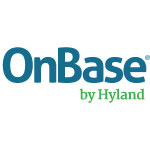The federal government is increasingly under pressure to modernize services and streamline workflows. But, even as citizens demand better services and workers seek more efficient processes, resources are dwindling. Legacy IT systems are a burden, often incapable of enabling agencies to meet demands with their current tools. But, how are agencies supposed to acquire new technologies to streamline workflows without the money to purchase or manage them?
The key is to reimagine the cost equation for technology.
While any new technology requires upfront investment, that doesn’t mean that it will require additional resources. Instead, new technologies that automate time-consuming tasks and reduce duplication can actually re-allocate resources to alleviate budget and workforce constraints.
With the right technology, agencies can cut costs associated with duplication, paper-based processes, and even the maintenance and upgrades of legacy tools. At the same time, they can increase efficiencies by streamlining and automating workflows. That allows workers to focus on mission-critical tasks rather than simply completing turnkey tasks like data entry.
So what does that technology look like? Agencies should seek a software-based enterprise content management (ECM) system that can achieve modernization goals while enhancing productivity. ECMs provide the tools and strategy to digitize processes, organize agency content, and ultimately optimize workflows. To choose the right ECM, make sure to look for these six critical capabilities:
1. Capture. No matter where your agency’s documents are located or what format they come in, your platform should be able to capture them right at their source. Data capture helps eliminate costly, paper-based processes.
Capture functionality also reduces duplication of effort. By automatically reading paper forms and translating them into digital information, an ECM can eliminate manual data entry. Once data is captured in a digital format, your platform should also automatically index, organize and classify your documents, as well as the data they contain, into a single system.
2. Manage. With all your data, documents, and processes on a single platform, you can better manage your information. Structured processes, with predictable steps and outcomes that can be mapped on a flowchart, can be optimized and improved with a robust ECM platform. Specifically, make sure your platform can automate repetitive process steps, leaving only exceptions and unpredictable processes for your knowledge workers to manage.
This automated management saves both time and effort, allowing workers to focus on only priority tasks. It also gives users – including remote and field staff – greater visibility into agency information because all documents and data are collected in a single, organized system.
3. Access. Creating an accessible experience that is unique to user preferences makes adoption far more likely. More than capturing and organizing your information, the ideal ECM platform will also make critical content available to the people who need it, wherever they are, from almost any device or applications. That enables agency workers to work the way they are most comfortable and most productive.
4. Integrate. One of the biggest costs associated with custom-built technologies is the need to manually configure and upgrade them to interact with other systems and processes. Because many agency users leverage more than one IT system to complete their jobs, it’s necessary to connect your ECM to other technologies. However, this doesn’t have to be cumbersome or costly.
A software-based ECM platform can drastically reduce maintenance and integration costs. OnBase, for instance, is built to integrate seamlessly with core applications without the addition of custom code. With that automated solution, not only is content instantly available directly from those connected applications, the systems also synchronize data in real-time, behind the scenes.
5. Measure. You can only improve what you measure.An ECM platform should enable users and agency leaders to monitor and report on the information and activities it facilitates.
With a single view of agency processes, leaders can identify and eliminate bottlenecks and prepare for audits with immediate insight into what information you have and what information you need – without involving IT administrators.
6. Store. Ultimately, consolidating your content into one system eliminates the need to manage it across a variety of databases, systems and physical storage locations. But, your platform should do more to maximize storage.
As with any system that manages government information, leaders should seek an ECM platform that can securely store and protect content from disaster throughout its entire lifecycle. But more than just protecting government data, an ECM should maximize storage to reduce costs and increase efficiencies. For instance, OnBase automatically destroys content when it expires in accordance with legal retention requirements to ensure that unnecessary documents aren’t retained simply to take up space.
A single platform, like Hyland’s OnBase ECM system, can provide all six of these critical capabilities to empower agencies to move beyond paper-based, duplicative processes and complex IT infrastructures. Ultimately, the right ECM platform saves agencies money, reduces staff workloads, and improves processes – setting them up to succeed in a digital future.





Leave a Reply
You must be logged in to post a comment.